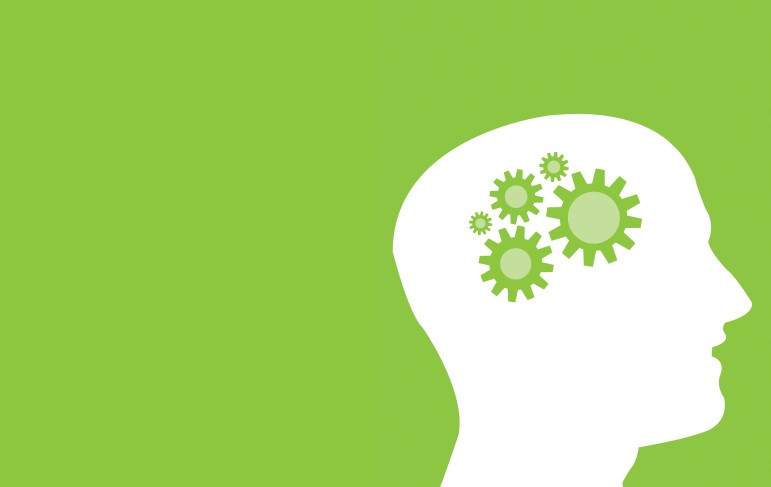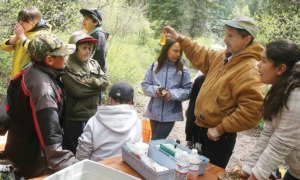
Anyone who works with adolescents knows what recent science has confirmed: Teenagers just don’t think like adults. In fact, researchers have known for awhile now that the teenage brain is wired differently; it remains under construction during adolescence and won’t develop completely until a person’s early 20s. That explains a lot about the often-bewildering actions of tweens and teens as they seek out novelty and test limits, often without regard to risk.
According to the National Institute of Mental Health, brain scans of children from their early years through age 20 reveal late changes in the amount of gray matter, which forms the brain’s cortex — the thin, folding outer layer where thought processes and memory reside.
For many years, it was thought that very young children had the most gray matter, but recent scans reveal that the peak of gray matter volume occurs during early adolescence. The capacity for learning and exploring is at an all-time high, critical to helping teenagers navigate the transition to adulthood.
And more than just gray matter is changing as the young child matures. The brain circuitry involved in emotional responses is also firing high. The amygdala, the part of the brain responsible for instinctual reflexes, such as fear and aggression, is developing early. At the same time, the brain pathways are refining, a process called pruning. At this time of rapid development, the brain is especially vulnerable to experiential and environmental impacts.
Toxic stress harms brain development
Now the American Academy of Pediatrics is urging its members to screen kids for one environmental impact — poverty — that has a proven impact on adolescent health and the developing brain. (See sidebar.) A growing body of research links poverty, with its insecure access to housing and nutritious food, to what is known as “toxic stress” — the result of chronic and severe activation of the body’s stress response system. Toxic stress can disrupt the architecture of the brain, affecting how a teenager thinks, reacts and anticipates the consequences of actions.
The neural circuits for dealing with stress are particularly malleable during childhood, according to researchers at Harvard University’s Center on the Developing Child. They have shown that early experiences shape how these circuits are turned on and off. Too much unrelieved stress while young can affect developing brain circuits so that the stress response system becomes either overly reactive or slow to shut down. And that can have repercussions far into the future.
“As a result, children may feel threatened by or respond impulsively to situations where no real threat exists, such as seeing anger or hostility in a facial expression that is actually neutral,” according to the Harvard working paper. On the other hand, they may remain excessively anxious long after a threat has passed.
Chronic exposure to stress can also impact a teen’s ability to make decisions, solve problems and think ahead.
“Kids who have been exposed to high doses of adversity have damaged their prefrontal cortex,” said Mark Cloutier, executive director of San Francisco-based Center for Youth Wellness. “That part of the brain is involved in executive function — the part of our behavior that is about organizing ourselves, like getting up in the morning and eating breakfast and getting prepared for the day,” he said.
The prefrontal cortex is also responsible for attention, working memory and impulse control, according to pediatrician James Duffee. He says science has now established a firm link between chronic stress and changes to the cortex.
“Using functional MRI, you can actually see a decrease in the connections among the neurons in the frontal lobes,” said Duffee. “Those kids exposed to early childhood stress have those decreased neuronal connections, and they’re much more likely to be diagnosed with ADHD or impulse disorders like conduct disorders. You can actually see it.” “Children in poverty with high exposure to adversity have their stress response turned on almost all the time,” said Duffee. Living without downtime from stress “creates wear-and-tear on the body and causes lifelong changes in brain function,” he said.
Screening for poverty and stress, building resilience
A single question asked at an annual check-up — whether parents have trouble making ends meet — could help pediatricians identify children at risk for serious health problems associated with poverty, and the chronic levels of stress that often accompany it. The American Academy of Pediatrics (AAP) now urges members to assess if their patients’ families are struggling financially and then commit to helping them access the community resources they need to thrive.
The AAP, which represents 64,000 U.S. pediatricians, published new recommendations in a policy statement and technical report in the academy’s journal Pediatrics. Lead author James Duffee, MD, MPH, said the policy represents “a new emphasis on the health of children in communities, trying to get pediatricians to think broadly about the context in which a child is born.” According to the report, almost half of young children in the United States live in poverty or near poverty, and poor children have higher rates of low birth weight, infant mortality and chronic illnesses such as asthma, Type 2 diabetes and obesity.
According to Duffee, toxic stress has also been proven to disrupt the architecture of the developing brain, damaging the prefrontal cortex, which is responsible for impulse control, planning and thinking about consequences.
But the effects of poverty can be mitigated, and that’s where early intervention can help. “There is a way that we can change toxic stress into tolerable stress,” says Duffee. He cites the developing science on resilience, which shows that growing up in a close, supportive relationship with an emotionally attached adult can help a child overcome adversity.
By promoting those early attachments, pediatricians and other adults can help young people develop protective factors and head off potentially serious health effects. “One of the changes in pediatric practice is looking for ways we can promote relational health and not just physical or medical health,” says Duffee.
The Center for Youth Wellness (CYW), located in San Francisco’s low-income Bayview Hunters Point neighborhood, is working with the AAP on a national campaign, Children Can Thrive, to raise awareness about the impact of a range of childhood stressors, known as adverse childhood experiences, or ACEs. These experiences of abuse, neglect or household dysfunction can have grave implications for both child and adult health.
In screening children for ACEs, the Center recognizes a “high relationship” between low income and these harmful stressors. “Although children from any economic status can live with ACEs, exposure is greater for the one in five U.S. children who live in poverty,” said Executive Director Mark Cloutier.
Knowing that a child lives in poverty “changes everything,” said Susan Briner, MD, medical director at the Bayview Child Health Center. In treating children living in families experiencing low incomes, Briner knows to expect there may be more emergency room visits “because if parents miss a day of work for an office visit, that can be catastrophic to their housing or family budget.”
Asking About Finances Can Help
“I think it’s a great question to ask,” says Lottie Titus, a San Francisco resident who shares parenting of her three grandchildren. Titus says talking about finances with a family doctor “can establish why there are so many illnesses, so many challenges, so much depression.”
Titus’ grandkids “have been exposed to a lot,” she says. “All their lives they’ve lived in public housing.” The children, ages 10 to 14, also have health problems, from Type 1 diabetes to asthma and emotional problems. All three children see a therapist.
Titus is also involved in community programs such as Big Brothers Big Sisters of the Bay Area and the youth development organization City of Dreams. Titus said it was the children’s pediatrician who ensured that Titus was connected with these services: “She referred me to many programs that have been beneficial to the children, pointing them in the direction of the services that they needed, that helped them to be well-rounded.” Titus has since become a community liaison with City of Dreams, providing information and resources to youth and families living in San Francisco public housing.
That’s the model of engaged pediatric practice the AAP, through its new policy statement, hopes to see replicated nationwide.
– By Elaine Korry
NPR’s Health Blog, “Shots,” is co-publishing this article. Shots has written extensively this year about Adverse Childhood Experiences (ACEs).”According to the Adverse Childhood Experiences study, the rougher your childhood, the higher your score is likely to be and the higher your risk for later health problems.”
Click here for their coverage, including an interactive quiz determining your own ACEs score.
This story has been updated.
































